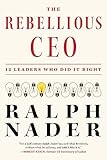With the credit bubble still deflating, “bad assets” still “unwinding” and taxpayers put on the hook for virtually every rescue scheme, the blame game has begun. Scapegoats abound, diverting public attention away from the anti-democratic fact that the current global financial/money creation system — now heavily weighted in “bad asset” derivatives or debt on debt — has grown so enormous that it has taken on a veritable life of its own. Like it or not, this mathematically impossible and easily corruptible system comes complete with its own set of continually evolving de facto rules and “arrangements” which may soon become a legal part of the global regulatory framework.
While too few have chosen to seriously consider the consequences, there are those who have sounded alarms. For example, in a working paper titled “Governing Global Finance”, author William D. Coleman “explore[d] the relationships between derivatives markets and the capacity of nation-states to govern” and “raise[d] the question whether the very global character of these markets and of their key players restricts the freedom of states to follow policy styles consistent with domestic institutional arrangements.” Coleman further argued that “global governance arrangements have supplanted to some extent the efforts undertaken by nation-states.”
No surprise then that while the public and their elected officials occupy themselves with assigning blame to isolated scapegoats, leading policy and opinion-makers have begun to openly call for the creation of a new “global authority” to fill the financial regulatory vacuum. Issues of national sovereignty notwithstanding, it is almost impossible to imagine how any such “authority” might neutralize, much less overcome, the systemic risk posed by derivatives given the structural flaws inherent within them. This is especially — though far from exclusively — true for OTC derivatives.
With seemingly rare insight and three years before Warren Buffet penned his famous warning about derivatives in 2002, Martin Mayer, Nonresident Guest Scholar, Economic Studies, at the Brookings Institute wrote that …
derivatives create a felt need for their own employment. … Unfortunately, over the counter derivatives—created, sold and serviced behind closed doors by consenting adults who don’t tell anybody what they’re doing—are also a major source of the almost unlimited leverage that brought the world financial system to the brink of disaster last fall [of 1998, due to the threatened implosion of the relatively small Long Term Capitol Management]. These instruments are creations of mathematics, and within its premises mathematics yields certainty. … But … The more certain you are, the more risks you ignore; the bigger you are, the harder you will fall. … The one lesson history teaches in the financial markets is that there will come a day unlike any other day. At this point the participants would like to say all bets are off, but in fact the bets have been placed and cannot be changed. The leverage that once multiplied income will now devastate principal.
“The Dangers of Derivatives,” Martin Mayer, Wall Street Journal, 1999.
Bad as the aforementioned pitfalls of irrational exuberance coupled with nearly unlimited leveraging, high risk and built-in lack of transparency may be, there is much more to the myriad of problems associated with derivatives in general, as Professor Coleman and others clearly detail. For example, derivatives — along with other speculative tools — are illiquid assets due to the fact that their performance determines the timing and amount of pay-offs.
So it was that in the early 19th century, well before the modern age of OTC derivatives, small country banks would help speculators build up localized asset bubbles through leveraged loans on assets such as land or railroads. As with the modern derivatives trade — much of which is based on bundled loans or debt on debt — when the speculative fever forced prices to an unsustainable level, the bubble burst. Asset illiquidity then forced a dramatic drop in prices and bad debt forced banks out of business — taking with them whatever assets ordinary citizens may have placed in their trust and simultaneously creating a credit contraction. Those lucky few still left with money in their hands then bought up depressed assets for “a dime on a dollar”and another transfer of wealth took place.
Devastating as they were to ordinary people and their communities, these were isolated bubbles with relatively limited causative factors and effects. Today, the very size and nature of the global derivatives bubble looms large as the newest and most ever-present threat of the seize up, and subsequent destruction, of the entire global marketplace. The negative effects of the predictable deflating of the credit bubble will be felt most acutely and for years to come by ordinary citizens around the world, with the U.S. leading the way as more and more of its now enticingly priced resources are sold to the highest bidder and more and more of its citizens are forced to accept ever lower wages, fewer jobs, increasing taxes and reduced expectations.
As the world’s largest economy, the United States has long played a leading role in the global financial system and cannot escape its share of blame in the current fiasco. Its policies and actions have unquestionably played a key role in the most recent explosion of both U.S. and global use of derivatives — not only as money-making tools, but also as an extremely privileged “off-balance sheet” money creation tool.
In 1997, Thomas F. Siems, who is a senior economist and policy adviser at the Federal Reserve Bank of Dallas penned a Policy Analysis titled “10 Myths About Financial Derivatives.” Here he posited that “the explosive use of financial derivative products in recent years was brought about by three primary forces: more volatile markets, deregulation, and new technologies.”
Ten years later, in 2007 testimony before Congress, economist and former investigator for the Senate Banking Committee Robert Kuttner was able to draw a number of parallels between what is happening today and the “unregulated” 1920s. Government response to the 1920s fiasco led to the 1933 adoption of the Glass-Steagall Act, the purpose of which was to regulate the banking industry. Echoing Siems earlier assertions, Kuttner also discussed the long history of both de facto and legalized deregulatory efforts which have occurred since Glass-Steagall and the manner in which new technologies and volatility have interplayed with deregulation to “supercharge” old problems, while “federal breakwaters” have served — up until now — to stave off collapse:
Since repeal of Glass Steagall in 1999, after more than a decade of de facto inroads, super-banks have been able to re-enact the same kinds of structural conflicts of interest that were endemic in the 1920s — lending to speculators, packaging and securitizing credits and then selling them off, wholesale or retail, and extracting fees at every step along the way. And, much of this paper is even more opaque to bank examiners than its counterparts were in the 1920s. Much of it isn’t paper at all, and the whole process is supercharged by computers and automated formulas. An independent source of instability is that while these credit derivatives are said to increase liquidity and serve as shock absorbers, in fact their bets are often in the same direction — assuming perpetually rising asset prices — so in a credit crisis they can act as net de-stabilizers. …
… Beginning in the late 1970s, the beneficial effect of financial regulations has either been deliberately weakened by public policy, or has been overwhelmed by innovations not anticipated by the New Deal regulatory schema…
Of course, there are some important differences between the economy of the 1920s, and the one that began in the deregulatory era that dates to the late 1970s. The economy did not crash in 1987 with the stock market, or in 2000-01. Among the reasons are the existence of federal breakwaters such as deposit insurance, and the stabilizing influence of public spending, now nearly one dollar in three counting federal, state, and local public outlay, which limits collapses of private demand.
Testimony of Robert Kuttner before the Committee on Financial Services of the U.S. House of Representatives, October 2, 2007.
Following close on the heels of the 1999 repeal of the Glass-Steagall Act (through the Gramm-Leach-Bliley Act) mentioned by Mr. Kuttner, came the Commodity Futures Modernization Act. Passed by a lame-duck session of Congress in the fall of 2000, it was signed into law by then President Bill Clinton. Known as the “Enron Loophole,” this Act was considered to be the most significant modification to the regulation of derivatives trading to occur in 25 years.
While the loophole specifically refers to exemption from meaningful oversight and regulation of the electronic energy commodities market, the Act itself may have had much broader ramifications for the securities markets. At the very least, according to independent analyst Mike Whitney, this bill “effectively kept much of the market for derivatives and other exotic instruments off-limits to agencies that regulate more conventional assets like stocks, bonds and futures contracts…” (“The Bernanke Politburo’s Next Big Plan,” Mike Whitney, Market Oracle.)
Defacto and actual derivatives deregulation aside, there are a number of additional factors which have contributed to the veritable explosion in global growth of the derivatives trade seen over the last seven or eight years, with ominous implications for both policy-making decisions and the economic climates of the world’s nation states. Analysts say this explosive growth has essentially been fueled by the United States through a number of key, converging factors that include:
- The Fed’s cheap money policies which then led to the current sub-prime crisis, global in its reach and effect
- Ballooning public outlays for war-related expenditures which extend down to the local level, as a response to the new, open-ended “war on terror”, again global in its reach and effect
- Burgeoning trade deficits and corresponding increase of foreign ownership of U.S. assets, occurring as a result of “economic globalization” which in turn is enforced through a growing plethora of “free” trade/investment agreements and rising militarism around the world
Preferential tax treatment of derivatives is yet another factor contributing to their growth in recent years in the U.S. and elsewhere. So favorable has this tax treatment been that Alex Raskolnikov, a Columbia Law School expert on federal income taxation and tax policy, told members of the House Ways and Means Committee’s Subcommittee on Select Revenue Measures in March of this year that “financial derivatives offer unprecedented opportunities to reduce or eliminate capital income taxation.”
Hence, according to analyst Paul B. Farrell, “derivatives have become the world’s biggest ‘black market,’ exceeding the illicit traffic in stuff like arms, drugs, alcohol, gambling, cigarettes, stolen art and pirated movies. Why? Because like all black markets, derivatives are a perfect way of getting rich while avoiding taxes and government regulations.”
The trouble is, says Farrell, that Wall Street knows derivatives provide a lucrative business despite the current slowdown and a volatile global marketplace. So it is that “[t]he financial crisis exacerbated by credit derivatives is costing so much to fix that speculators are now using those same instruments to bet on governments …”
Just as troubling is the fact that the domino effect of bank failure created by irrational exuberance coupled with lack of transparency, illiquidity, heavy leveraging, and counter party risk has quietly become an embedded feature of the newly emerging “global credit system” as Warren Buffet, bond fund king Bill Gross and others well knew. No longer are the old stand-by “federal breakwaters” of deposit insurance and public spending for infrastructure or health care enough to stave off collapse of national economies.
For example, a May 2002 white paper prepared for the IMF Legal Department and IMF Institute Seminar on Current Developments in Monetary and Financial Law bore the descriptive title “Emergency Liquidity Financing By Central Banks: System Protection or Bank Bailout?” Its purpose was to
consider ways in which emergency liquidity funding (ELF) may be provided by central banks to individual banks that are experiencing financial difficulties. ELF takes the form of loans from, or guaranteed by, the central bank that are designed to assist one or more commercial banks that are either undergoing a run on deposits or as a result of concerns about safety and soundness or that are experiencing a systemic financial crisis.
The conclusion of this white paper was as follows:
The rules for providing ELF should be revisited, and the tilt toward providing financing for every bank experiencing a run addressed. At the same time, there should be sufficient flexibility in the law to allow a central bank to provide ELF on an unsecured basis when needed in a banking crisis. Central banks will do so regardless of the rules, therefore the law should reflect the practical realities. In the case of a banking crisis, as provided in the model law, consideration should be given to having the state liable for ELF, since the health of an essential part of the economy is at stake. [present author’s emphasis]
Whether the rules have been changed or not seems almost a moot point because making the “state” — for example the United States government and its taxpayers — liable for “emergency liquidity funding” provided by the Fed or other central banks to individual, privately owned banks experiencing trouble is exactly what has been happening since the “credit crisis” began in earnest last August 2007. Curiously, “[t]he U.S. government’s [latest October 2008] $160 billion handout to banks from Niagara Falls to Beverly Hills is going mostly to lenders that need it least, putting weaker rivals at risk of being shut down or taken over … ”
What lies ahead for American taxpayers was driven home by the recent $700 billion bank bailout and at least partially revealed in an April 9, 2008 article in the Wall Street Journal: “The Federal Reserve is considering contingency plans for expanding its lending power in the event its recent steps to unfreeze credit markets fail… Among the options: Having the Treasury borrow more money than it needs to fund the government and leave the proceeds on deposit at the Fed … The internal discussions are part of a continuing effort at the Fed, similar to what is under way at foreign central banks, to determine its options if the credit crunch becomes even more severe.”
Perhaps it was these “internal discussions” which led Pimco director Bill Gross, aka the Warren Buffet of the bond world, to remark last year that “What we are witnessing is essentially the breakdown of our modern-day banking system, a complex of leveraged lending so hard to understand that Federal Reserve Chairman Ben Bernanke required a face-to-face refresher course from hedge fund managers in mid-August [2007].” In essence says Gross we are operating in large part under a “shadow banking system” which uses derivatives as a new method of creating money outside the hitherto standard liquidity rules of central banking operations.
So it is that, in the maniacal effort to maintain the current, mathematically impossible money creation system “we are now in the process of designing a new global economy”. How will this be done? By “redesigning the global credit system” in which “the US appears to be a helpless giant, needing all the help it can get.”
The end result? A massive and continually accelerating transfer of assets and wealth from the real economy to the financial economy, compliments of governments and their taxpayers.
We can of course sit idly by, as we have long done, while the global credit system is redesigned for us and as more and more of us fall victim to the ravages of unpayable interest and the greed and corruption it breeds. We can even wait, if we choose, until the system completely collapses into cataclysmic chaos, perhaps bringing with it horrors hitherto unimagined.
OR we can demand the solution handed to us by our forefathers, that the Congress “coin” (as in create) Constitutional money and regulate the value thereof, with the states being limited to using what the Congress “coins” (or creates) as money. But maybe first, we need to understand the true function of money, which is to create abundance for all — not just the fortunate few.










